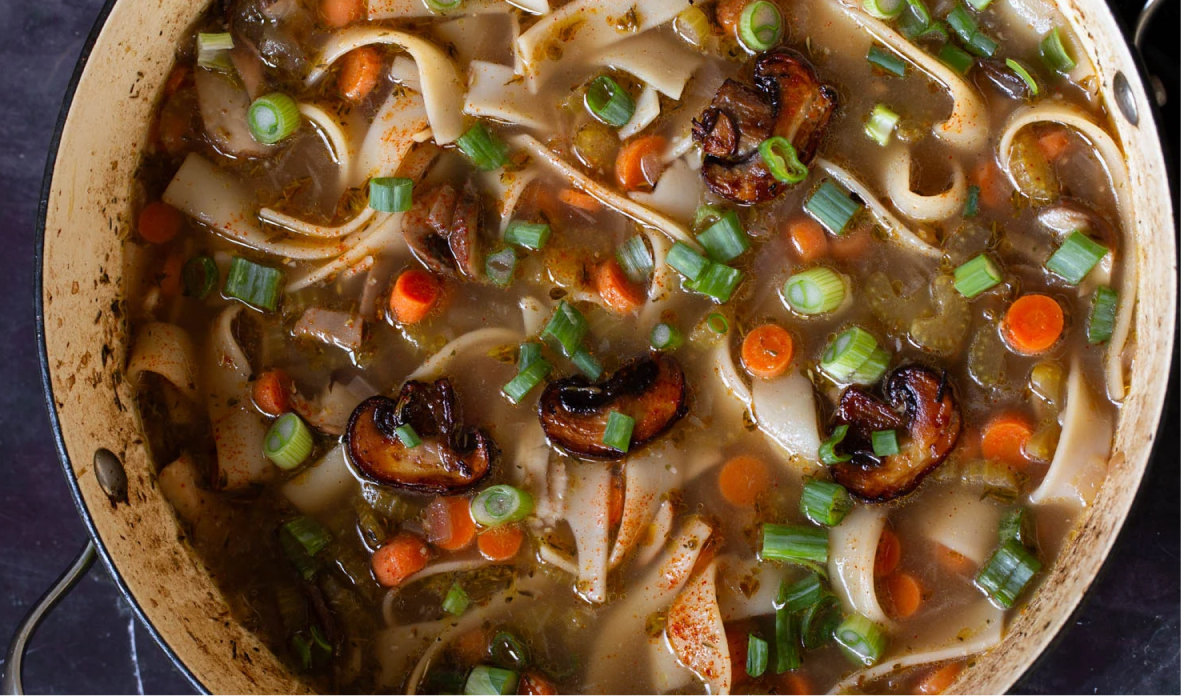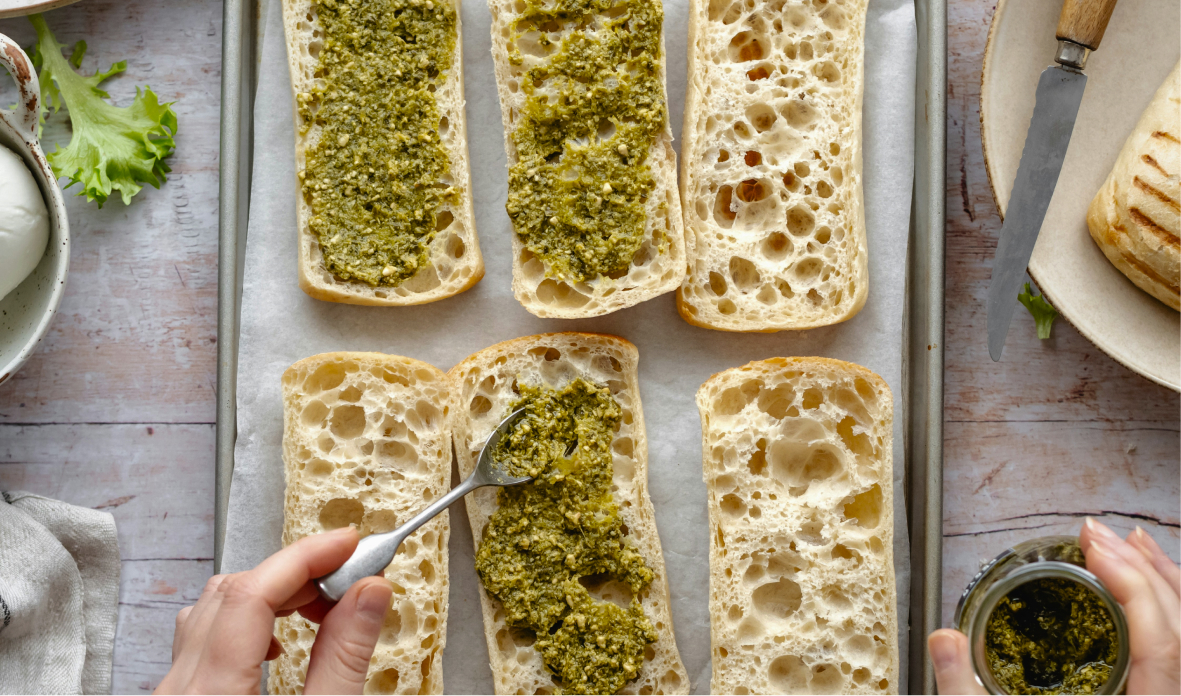Growing Your Own Food: 5 Steps to Start Home Gardening

Join the community





Cultivating food is a practice as old as human civilization. It’s one of the most unique elements of our species, and one from which many folks are disconnected.
Growing your own food can be a revolutionary act against abusive industrial food systems. It’s also a fantastic way to reconnect to the earth and the cycles of life. Here’s everything you need to know to get started.
What are the benefits of growing your own food?
1. Save Money
Is it cheaper to grow your own food or buy it? The average garden yields $600 of produce in a year and only costs around $70. You’ll save even more by growing food that’s expensive at the supermarket – like leafy greens, tomatoes, and herbs.
2. Be Healthier
In general, folks who garden eat more plants than those who don’t. Eating a variety of fruits and veggies is great for our overall health – but it’s even better when they come straight from the garden. That’s because fresh produce is more nutrient-dense than plants harvested early to survive the journey to the supermarket.
Our bodies also start producing immune-boosting vitamins after just 5-30 minutes in the sun – which is about how long it takes to water and weed! Plus, according to WebMD, gardening can improve our mood, self-esteem, and our attention spans.
Growing your own food is good for the planet, too. You avoid plastic packaging, transportation emissions, and eat with the seasons (which is more energy-efficient). Compared to lawns, gardens also improve soil health and use less water.
3. Connect with Nature
Growing your own food is a way to get outside, get your hands dirty, and reconnect with nature. Spending time outdoors has been shown to increase trust, cooperation, and closeness with others – all things we need to create a society that nurtures, rather than depletes.
People often ask me what one thing I would recommend to restore relationship between land and people. My answer is almost always, “Plant a garden.” It's good for the health of the earth and it's good for the health of people. - Robin Wall Kimmerer, Braiding Sweetgrass
Can I grow food in an apartment or small space?
Absolutely! You don’t need a big backyard to start a home garden. Here are a few tips for growing your own food in a small space:
- Use any sun-soaked space. Hang planters from your windows, transform your outdoor balcony, or even put a few pots on your fire escape.
- Modify for indoor growing. Some plants grow better with less space and sunlight than others – we’ve included a helpful chart below. You can also consider buying an AeroGarden to make the most of indoor gardening.
- Embrace container gardens. Potted plants require very little space, but can still produce a bounty of fresh produce.
- Join a community garden: Rent a plot at a community garden and get to know your neighbors. Explore this community garden database to discover projects near you.
- Grow upwards instead of outwards. Vertical gardening uses trellises and columns to maximize yield in a small space.
5 Steps to Starting a Home Garden
Growing your own food might seem daunting, but you don’t have to master everything at once. Follow these five simple steps to get started, and perfect your process over time.
1. Plan Your Garden
Your first step is to decide where you want to garden. This could be your backyard, apartment balcony, or even a sun-soaked windowsill. Here are a few tips for picking a location:
- Pick a spot that gets at least six hours of daily sunlight daily (or use an indoor grow light).
- Place south of buildings and large trees to maximize sun exposure.
- Avoid spaces exposed to high winds, extreme heat, or flooding.
- Situate your garden near a convenient water source or irrigation system.
- Choose somewhere protected from pets, wildlife, and unsupervised kids.
Only plant crops that can tolerate the climate where you live. Look up your Plant Hardiness Zone or call up your local county extension office to choose species well-suited to your region.
Once you know what you can plant, decide what you want to plant. Only grow foods you enjoy eating, especially if they’re expensive at the supermarket (like berries, tomatoes, and herbs). Some of the easiest veggies to start with are: lettuce, spinach, radish, cucumber, bell pepper, green beans, zuchinni, tomatoes, basil and mint
2. Prep Your Garden
Once you plan your garden, it’s time to prepare the space. This step requires the most time and investment – but you only have to do it once!
Proper soil is the foundation of a healthy garden. Use regular potting mix for small containers like pots and window boxes. For garden boxes, purchase specialty raised bed soil. Regular soil is too dense for any type of container garden.
If you’re turning part of your lawn into a garden, contact your local USDA extension to test your soil composition, PH levels, and nutrient mix. They’ll let you know if your soil is safe and suitable for gardening, and what you can do to correct imbalances.
Some basic equipment to get started with: hand trowel, hand fokrk, shovel or spade, garden hoe, gardening gloves, watering can, hand pruner, garden scissors.
3. Plant Your Garden
Growing your own food isn’t complicated. But it’s not as simple as tossing a few seeds in the dirt, either. Many plants should be started inside and transplanted once they’re stronger. This seed starting guide covers best practices for sprouting different crops.
Is it better to buy seeds or seedlings? Seeds produce a larger yield per dollar spent. But some species are harder to grow from seed, so ease into it. Some of the easiest crops to grow from seed are: cucumber, pumpkin, lettuce, peppers, eggplant, onion, zucchini, tomatoes, carrots, broccoli.
Whether you want seeds or seedlings, you can find them at your local nursery or garden center. You can also ask other gardeners in your life if they have extra.
Seed packets and plant labels usually include instructions for sowing depth, spacing, sun exposure, and watering. You can also use this USDA guide for planting common produce.
Here’s what to keep in mind:
- Don’t overcrowd. Plants are more productive when they don’t have to compete for resources.
- Gently massage and de-compact the roots of seedlings before planting.
- Lightly pat the soil into place, overpacking can damage delicate root systems.
- Always leave the stems exposed, covering them with dirt can inhibit growth.
- Label your plants so you don’t forget which is which.
4. Grow Your Garden
Growing your own food is an opportunity to tune into the cycles of nature. Follow these fruit and vegetable gardening tips for beginners to nurture a healthy harvest:
- The “knuckle test” is an easy way to tell if your plants need watering. Simply stick your finger in the soil down to your second knuckle. If it’s bone dry, it’s time for a drink.
- Weeds steal nutrients and water from plants you actually want in your garden. Get your hands dirty a few times a week to remove invasive species.
- Learn how to compost at home to make nutrient-rich fertilizer you can use throughout the growing season.
- Regularly check leaves for bite marks or other signs they’re getting nibbled. You may need to put up a rabbit fence if you've got unwanted dinner guests.
- It’s okay to prune your garden if it gets too thick. Otherwise, it’s more vulnerable to disease and sun starvation.
5. Harvest and Enjoy
Eventually, you’ll get to reap the fruits (and veggies) of your labor. Most crops reach their flavor peak just before maturity – this handy guide unpacks when and how to harvest.
Even small gardens can produce an abundance of produce. Here’s some ideas for your leftovers:
- Dense veggies (like beets, broccoli, cauliflower, carrots, and beans) all do well in the freezer. Just wash, blanch, and freeze for later.
- Can fruits and pickle veggies. Google instructions for specific produce to ensure you do it safely.
- Share your bounty with friends and family, post on community groups, or set up a front yard “free pantry.”













